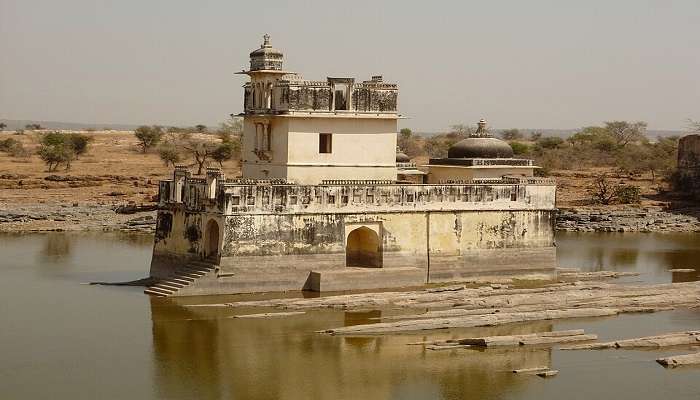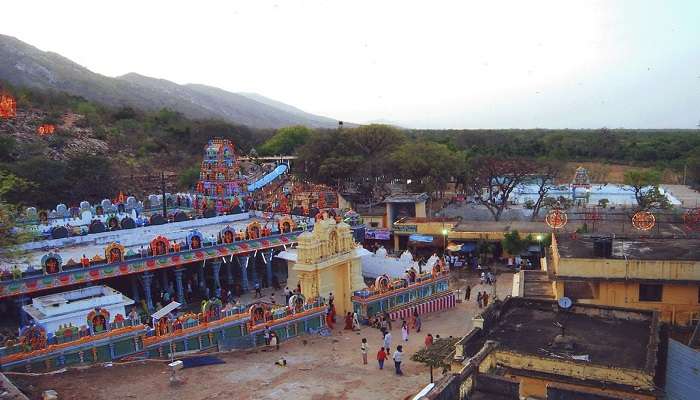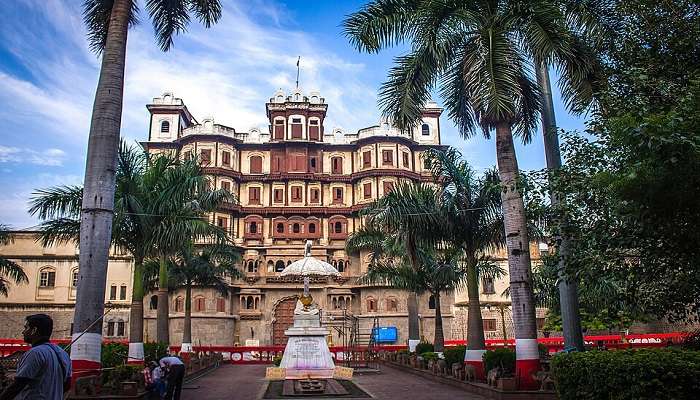Visit Tughlaqabad Fort Delhi And Explore Top 5 Historical Sites Nearby In 2025
Tughlaqabad is one of the seven cities of Delhi, and the historical setting is highly alive and tangible in almost all the places in the city. One such historical structure that does not need any proving ground is the Tughlaqabad Fort Delhi. This historical fort, Ghiyas-ud-din Tughlaq, constructed in the Tughlaq era of the 14th century, takes us to the tale of the splendour of this empire. Please remain with us further to get details about the five historical places around the Tughlaqabad Fort, all characteristic examples of tourism favourites associated with many great heritages of Delhi.
Historical Sites Around Tughlaqabad Fort Delhi
Around Tughlaqabad Fort are fascinating monuments, majestic tombs, and architectural masterpieces telling about differing cultures and legends of the early epochs. Whether one is a grand architectural lover, a pure antiquity enthusiast, or a leisure tourist, historical monuments in and around Tughlaqabad Fort take one back in the mediaeval period and present India in all its glory in front of the individual. Thus, this bird’s eye view of historical interest proposes an analysis and addition to the top five in Tughlaqabad Fort, which are all lighthouses.
1. Adilabad Fort
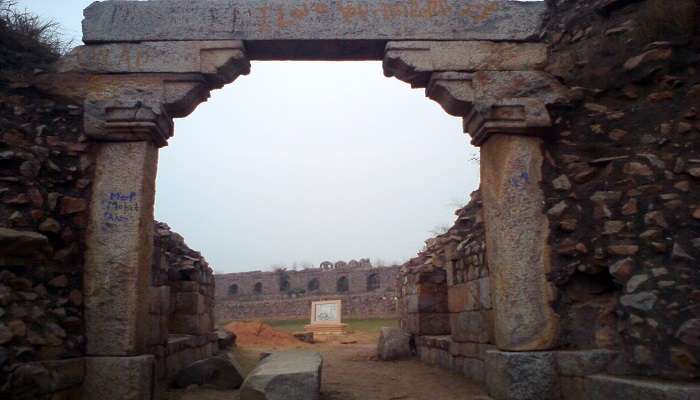
Image Credit: Hadez47 (Ashwani Kumar) for Wikimedia Commons
Another architectural marvel from the Tughlaq period is Adilabad Fort, which can be called the twin of Tughlaqabad Fort. Muhammad bin Tughlaq constructed this fort, which was a little smaller than that of Tughlaqabad but similar in design. The architecture has immense stone walls, massive gateways, and remnants of ancient buildings. Although the counterpart could be more preserved, Adilabad Fort enables these history buffs with a decent enough expedition.
Tip: Visit early in the morning to see and appreciate the site silently. The view from the top of the surrounding area is fantastic.
Major Attraction: The stunning architecture and almost untouched ruins give an idea about the mediaeval history of Delhi.
Also Read: Archaeological Museum In Delhi
2. Ghiyas-ud-din Tughlaq’s Tomb
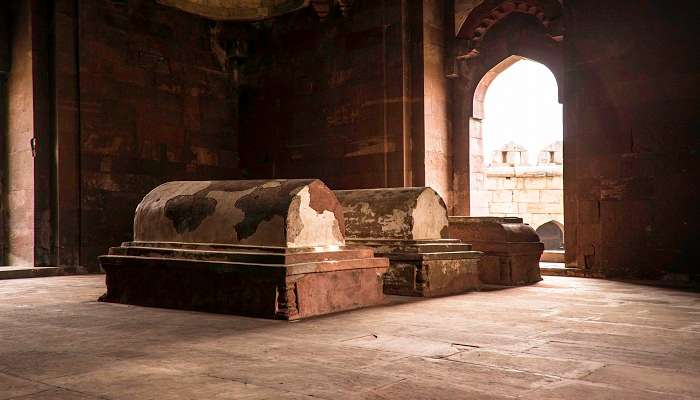
Image Credit: Mahabalaindia for Wikimedia Commons
This is an attractive mausoleum built in memory of the founder of the Tughlaq dynasty and lies close to Tughlaqabad Fort Delhi. The Ghiyas-ud-din Tughlaq’s Tomb is an excellent example of Indo-Islamic architecture with perfect harmony in fusion between red sandstone and white marble. It is octagonal and can be raised on a platform surrounded by a high wall. The tomb complex includes the graves of other family members of Ghiyas-ud-din. People with a unique eye for Delhi’s architectural heritage will fall in love with the serenity of the place and its designs.
Tip: Visit the tombs in the late afternoon, when the setting sun leaves a golden yellow on the tomb.
Major Attraction: This tomb is further emphasised and highlighted with its red sandstone and white marble combination, accentuated by a well-maintained garden.
3. Surajkund
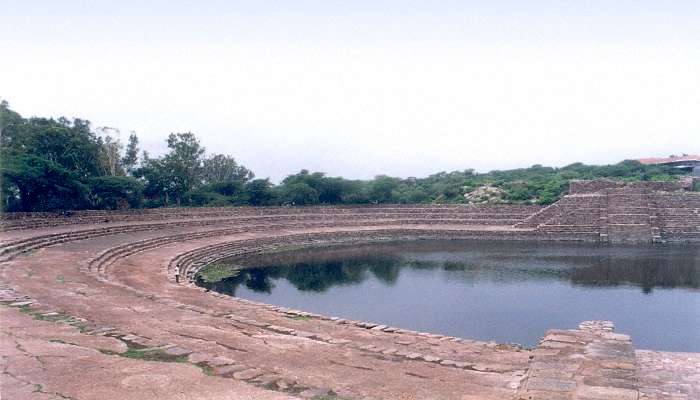
Image Credit: Jyoti Prakash Bhattacharjee for Wikimedia Commons
Surajkund is an ancient reservoir near Tughlaqabad Fort, Delhi. It is dated back to the 10th century. According to the legends, Surajkund was constructed by the Tomar King Surajpal. This ancient water reservoir is famous for its semi-circular shape and the Surajkund Mela. The Mela is held every year and portrays the rich Indian heritage. Surroundings full of lush greenery make the site calm and quiet, away from the city rush. This ancient rainwater reservoir presents an essential instance of ancient water conservation techniques.
Tip: The Surajkund Mela, a festival boasting vibrant cultural fare, should be the right time to visit.
Major Attraction: The Surajkund Mela is a cultural extravaganza to which artisans and performers from all over India come annually.
Related Post: Agrasen ki Baoli
4. Qutb Minar Complex: A UNESCO World Heritage Site
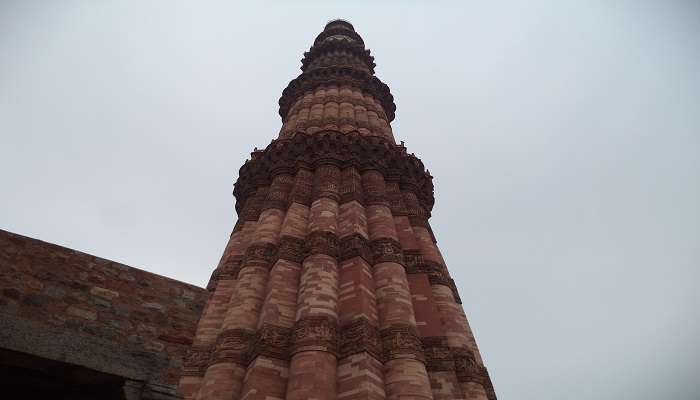
Image Credit: Rounik Ghosh for Wikimedia Commons
The Qutb Minar Complex is a UNESCO World Heritage Site and one of Delhi’s most important historical sites. This complex is only a short way from the Tughlaqabad Fort Delhi, hosting the country’s iconic Qutb Minar—a 73-metre tall minaret constructed in the early part of the 13th century. Other significant buildings within this complex also exist: the Alai Darwaza, Quwwat-ul-Islam Mosque, and the Iron Pillar. The Qutb Minar is an absolute Indo-Islamic architectural marvel with its intense carvings and inscriptions. Not only is it an architectural splendour, but it is also an essential historical site that takes one back to the early Islamic period of India.
Tip: Getting up with the first rays of the dawn or coming later in the afternoon to escape the overcrowding will reveal the site’s beauty without expenditure.
Major Attraction: This tall Qutb Minar and the historical significance of the complex have made it a very visited site in Delhi.
5. Hauz Khas Complex: A Blend Of History And Modernity
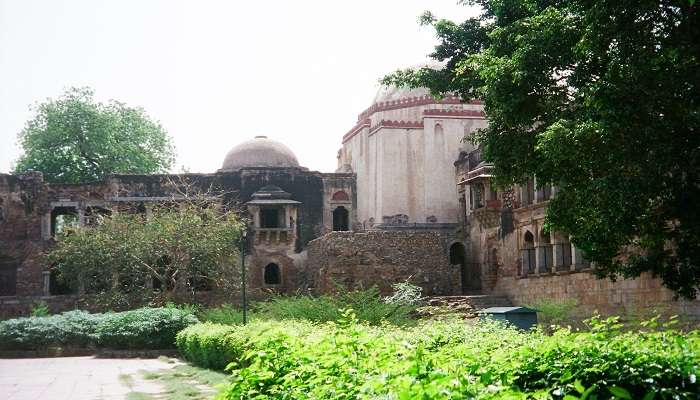
Image Credit: Nvvchar for Wikimedia Commons
The Hauz Khas Complex, situated proximate to Tughlaqabad Fort Delhi, is a beautiful amalgamation of historical and modern attractions. The complex dates back to the 14th century, newly constructed by Alauddin Khilji. This comprises a vast water tank, mosque, madrasa, and several pavilions. From being a historic village, Hauz Khas has transformed into this exuberant urban village with a fine blend of history, art galleries, chic cafes, and boutiques. The historical structures are well-maintained, with greenery all around, adding to the beauty of the entire area. The complex offers peace with a retreat where one can stroll while admiring the ancient architecture.
Tip: One should take advantage of local cafes and art galleries to get a contemporary view of Delhi.
Major Attraction: Historic establishments and modern amenities have made this place popular among the locals and tourists. Simply put, the historic establishments and modern-day amenities make Hauz Khas an attractive point by themselves.
You May Also Like To Read: Chhatarpur Temple In Delhi
Tughlaqabad Fort Delhi and its periphery with associated historical sites take one on a fantastic odyssey of Delhi’s heritage and architectural marvels. From the Tughlaqabad Fort’s imposing walls to the intricate designs in the Ghiyas-ud-din Tughlaq’s Tomb and the cultural hub of Hauz Khas, each has its tale and beauty. A visit to these places helps one understand more profoundly the historical and cultural importance of Delhi and its development over the ages. Plan your trip to Delhi for a beautiful journey.
For our editorial codes of conduct and copyright disclaimer, please click here.
Cover Image Credit: Saad. Akhtar for Wikimedia Commons
Frequently Asked Questions About Tughlaqabad Fort Delhi
What is the historical significance of Tughlaqabad Fort Delhi?
The Tughlaqabad Fort was built in the 14th century by Ghiyas-ud-din Tughlaq. It showcases the architectural craftsmanship and creativity of the Tughlaq family. This fort is, without a doubt, one of the oldest forts of Delhi. It contributed a lot to the city's history.
How to reach Tughlaqabad Fort Delhi?
This fort is situated in South Delhi and is easily reachable by car, taxi, or public transport. The nearest metro station is Tughlaqabad on the Violet Line.
What are the visiting hours for Tughlaqabad Fort Delhi?
Tughlaqabad Fort is open to visitors from sunrise until sunset. Visitors should plan a visit during daylight hours, as this is the most convenient and accessible time to appreciate the ruins.
What are the things to note before visiting Tughlaqabad Fort Delhi?
Yes, an admission charge will be taken for entering Tughlaqabad Fort. It is different for Indians and foreigners.
Which more historical places can I explore around Tughlaqabad Fort Delhi?
Other historical places that can be visited around the same time are Adilabad Fort, Ghiyas-ud-din Tughlaq's Tomb, Surajkund, Qutb Minar Complex, and Hauz Khas Complex—each with a different history and architecture.
People Also Read:
Red Fort Mehrangarh Fort Kalinjar Fort

Unveil the hidden treasures of the globe and turn every travel dream into reality. As a Content Writer, I am passionate enough to craft stories from ancient wonders to modern marvels. My words paint the picture-perfect itinerary for unforgettable experiences. Let my words be your trusted guide to immerse in the diverse culture and discover the beauty of the unknown.


